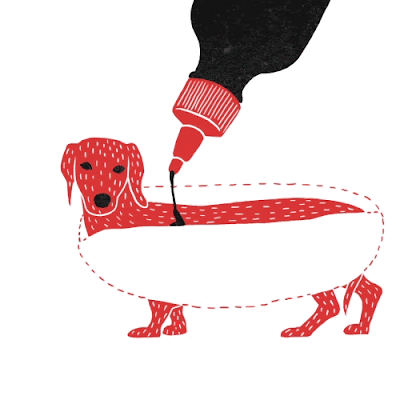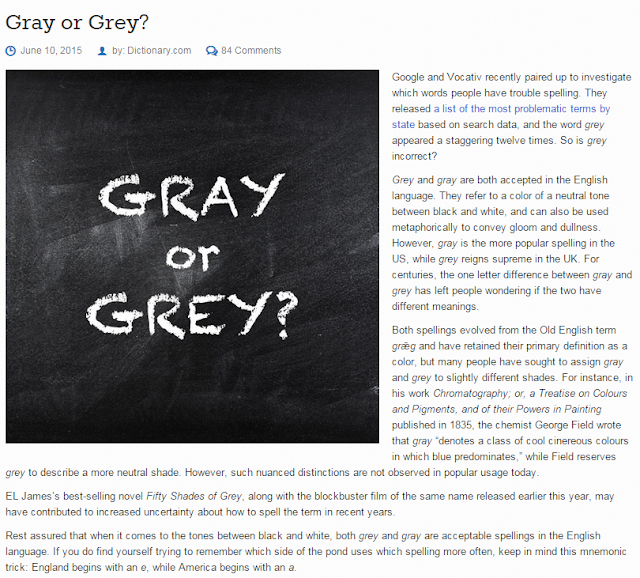New from NPR 玻璃建築害鳥喪命,這主題托福考過啊。Learn how glass kills birds.
 |
| animation by Min Liu ( Pinterest) |
A Clear and Present Danger: How Glass Kills Birds
by CHRISTOPHER JOYCE
And
now let's move from welfare reform社會福利改革 to architectural reform. Modern
architecture involves a lot of glass. But glass kills millions of birds
every year, when they collide with撞擊 windows. Biologists say as more
glass buildings go up, more birds are dying.
NPR's
Christopher Joyce has the first of two reports on what a group of scientists
and architects are doing about that, and he begins at a bird preserve鳥類保育 in Pennsylvania.
CHRISTOPHER
JOYCE, BYLINE: Today at the Powdermill Avian Research Center in western
Pennsylvania, scientists are catching birds. Luke DeGroote is patrolling巡視a mist net霧網 that runs for hundreds
of yards through a dense密集的,
wet forest.
LUKE
DEGROOTE: It's a very fine mesh織得很細很綿密的網, and that's why the birds run into
it. And they, essentially, will fly towards the net and fall into these pockets網子中間的洞.
JOYCE:
Biologists normally retrieve the birds, and then mark them with metal bands鐵環 to
follow their migrations遷徙. Today, though, the
catch is for Christine Sheppard. Sheppard is an ornithologist鳥類學家 with the American Bird
Conservancy美國鳥類保育協會.
Her
mission is to stop birds from flying into glass. A lot of
them do, and they die.
CHRISTINE
SHEPPARD: Our best estimate is 100 million to a billion一億至十億隻鳥.
JOYCE:
A billion dead birds a year, in North America. That's just a guesstimate臆測的數字(此字從estimate來).
SHEPPARD:
Almost anybody you talk to has seen a bird hit a building, or has heard a bird
hit. The fact that so many people are seeing this, means it's happening all the
time.
JOYCE:
Sheppard says birds don't see the way we do. Most don't have good depth
perception深度知覺 beyond their beaks. They
have to get relatively相對的/比較 close接近 to an object to see much detail,
or distinguish it from background. What they do see in glass, is sky or trees.
SHEPPARD: Reflection反射 is definitely a problem.
JOYCE:
Reflections that make it seem as if there's no building there; just more sky
and clouds and trees. Even when there's no reflection, glass confuses birds.
SHEPPARD:
The other thing that happens is that birds will try to fly through glass to
something on the other side. And this can be a planted atrium充滿植物的綠化植物中庭; it could be a potted plant一盆植物.
JOYCE:
So Sheppard has set up an experiment at Powdermill. She's putting birds in a tunnel隧道 that sits in a grassy
part of the reserve. It looks like a house trailer拖車屋. Two panes長方形的一片 of glass enclose one end.
There's
regular plate
glass on one side; next to it is a pane of specially coated glass有特殊塗層的玻璃. Sheppard is testing various
coatings on - and in - glass that make them look visible to birds, but not to
people. A fine-mesh net just in front of the glass, keeps the birds from actually
hitting it.
JOYCE:
Luke DeGroote comes to the tunnel with the morning's catch – catbirds貓鵲.
DEGROOTE:
And they get their name from that cat-like sound that they make.
JOYCE:
The birds are in cloth bags布袋.
DeGroote wears several, tied on a string around his neck用一條線繞著他的脖子掛起來. Sheppard's assistant,
Cara Menzel, takes one and gives it a number.
CARA
MENZEL: Four-nine-nine-three-one.
JOYCE:
Then she gently puts it in the tunnel. She films which glass window it flies
toward.
MENZEL:
Direct left.
JOYCE:
The bird flies directly to the left - toward the regular glass. The glass on
the right has a pattern of lines painted on the inside. It's a material that
reflects ultraviolet
light紫外線. Birds see well in the
ultraviolet range. Presumably大概/想必, they see the pattern as
something solid具體固態狀的. The human eye can barely make it out人類肉眼無法分辨的. But Menzel notes that
when the sun sets太陽西下, it's a whole new
problem.
MENZEL:
Especially during these big migrations, where birds are coming through in
larger numbers. And a lot of them fly over at night. So the lighting
with the glass, at night, can play a big factor in it.
JOYCE:
Biologists believe birds are attracted to the lights inside buildings. Sheppard
has studied birds all her life. She says the real difficulty is trying to think
like one; to figure out why they do what they do. There's been some research in
Europe, but not much here.
SHEPPARD:
Not enough people know about it, and it's really important.
JOYCE:
Why is it important?
SHEPPARD:
Many people believe that - you know, birds have an intrinsic right基本的/固有的權利
not be killed. Birds are
seed dispersers 種子散布者; they eat tons of bugs.
So every bird that's killed on a building, is an ecological service that we lose失去了鳥類在生態上所能提供人類的服務.(也就是指鳥類對人類有助益)
JOYCE:
Several cities in the U.S. and Canada either have, or are considering, new
building codes that require bird-friendly materials對鳥類友善的材質. And there are some quick fixes快速的補救方式 for
windows – decals印花, or sheets of patterned
plastic that attach to glass. But ideally, biologists and architects want solutions
that people can't see, that will be standard products in buildings標準建材, and that won't cost an arm
and a leg不會太昂貴.
Christopher
Joyce, NPR News.










教練 第一句的welfare reform 似乎多打了一個g
回覆刪除感謝EERRIICC我改正錯誤重新上傳囉。
回覆刪除教練,請問NPR's Christopher Joyce has the first of two reports on what a group of scientists and architects are doing about that..這句是什麼意思? 尤其has the first of two reports 這個結構不是很懂,懇請不吝指教,謝謝
回覆刪除Hi rentata,
回覆刪除...has the first of two reports的中文意思是「兩篇報導中的第一篇」。因為NPR這個系列的報導一共做了兩篇。這一篇是其中的第一篇。on後面接的是主題,也就是一群科學家跟建築師為了防止鳥兒去撞玻璃窗戶做了甚麼努力。
希望這樣解釋你會覺得比較清楚。
教練明白了 謝謝您!
刪除